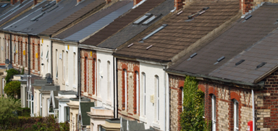Investing in homes for children in care is unique and different from regular property investing. It is highly regulated, and you have to go through a lot of hoops, but it can also be very rewarding if done properly.
The demand for smaller, home-like facilities for foster kids is increasing, while large dormitory-style ones are decreasing. However, it is difficult to find suitable 3–4-bedroom houses since families and conventional buyers purchase them quickly. You have to work hard to secure appropriate properties.
There is oversight from the regulator that has very strict standards for safety, care, and ensuring the youth are in stable environments. You need to thoroughly research who is operating the homes and what their values are. Things like parking, access to amenities, backyards, and good relationships with neighbours are important for the children too.
Securing 20-year leases provides consistency for the young people involved, but you have to be very fair about the terms with the service providers operating the homes. It can't just be about maximising your rental income. You need to consider the long-term impact.
Getting advice from experienced children’s homes and foster care operators is essential. You'll have to have an awareness of the regulations, connect with local authorities, analyse market trends, and be quite hands-on. Don't expect this to be a passive investment where you just collect checks.
With all the regulations, changing dynamics, and opportunities to do good, homes for foster children require more upfront work than regular real estate. But if you're willing to learn, build trust, and provide homes and hope for the children, then it's an excellent way to get financial returns while positively impacting young lives.
Our members can watch a video where we discussed this topic in detail. You’ll find it under Knowledge Bank on your members dashboard.




